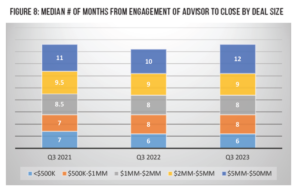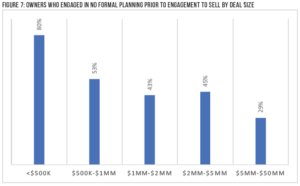Investment Banking – It’s Not the Debt that Kills You
When it comes to investment banking most people think that if a business goes bankrupt it must have had too much debt. But debt doesn’t necessarily kill companies, poor cash flow does. Here’s what I mean:
We’re working on a few buy-side engagements. For one transaction, we approached the seller with what we thought was a fair offer, but the seller wanted more. We talked it over with our client and decided to come close to the seller’s number, provided we got a specific deal structure.
We arranged the deal with about 60 percent cash at close and 20 percent seller financing at a six percent interest rate, amortized over 15 years with a five year balloon payment. Seller financing shrinks the amount of money you have to bring to the closing table and helps the deal get financed. (Plus, it keeps the seller invested in the business.)
The final 20 percent went into an earnout tied to gross profit. In doing so, we mitigated some of the risks in the deal, which in this case were some customer concentration issues and the fact that the owner was the sole relationship manager with a few top accounts.
For the seller to get 100 percent of the earnout, the company has to reach a benchmark based on the last two years gross profits for existing customers. That way, if any of those customers leave, the effective purchase price declines. This earnout will be earned in the first year, but paid out over the following four years under the same terms as the seller note.
The difference between the buyer and seller’s original numbers was 20 percent. We were able to come up 15 percent, but the only way to do that was to change our structure. None of the increase in value went to cash at close; it all went to seller financing or the earnout.
In other words, debt is okay. You can pay more as long as you get a structure that makes sense. If the seller’s expectations are in the ballpark of what’s reasonable, 9.5 times out of 10 I would pay the higher value as long as I got my structure.
The structure is almost always going to be more important at the end of the day. Too many buyers get focused on the total number and they either walk away from a good opportunity or they offer it all as cash at close without managing the risk.
The transaction will be a win-win for both parties. Even though we gave the seller something very close to his number, my client feels confident the deal will work for him too. The seller will have a continued interest in the company’s success, and the new owner will have enough cash flow to service debt and invest back into the business for future growth.
For advice on exit planning or selling a business, contact Al Statz, founder and CEO of Exit Strategies Group, Inc., at alstatz@exitstrategiesgroup.com. Exit Strategies Group is a partner in the Cornerstone International Alliance.






